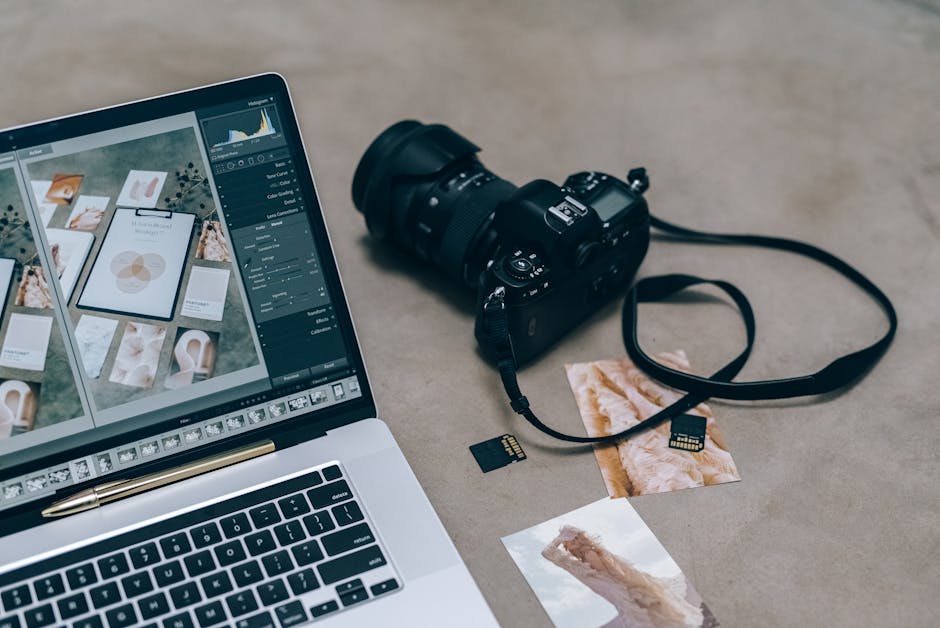Creating Memorable Moments With Sports Event Photography
Imagine yourself on the sideline of a thrilling sports event, capturing every heart-pounding moment with your camera. With the right skills and equipment, you have the power to freeze time and create unforgettable images that tell a story.
In this article, we will explore the art of sports event photography, from understanding the game dynamics to composing dynamic shots. Get ready to unleash your creativity and capture the emotion and energy of the game like never before.
Let’s dive in!
Key Takeaways
- Importance of game strategies in sports photography
- Positioning yourself in the right place at the right time
- Capturing defining moments of brilliant plays or game-changing moves
- Emphasising player interactions and the emotions displayed on the field
Understanding the Game Dynamics

To capture the best moments in sports event photography, you need to understand the key dynamics of the game. It’s not just about pointing your camera and clicking away; it’s about anticipating the action, knowing the game strategies, and capturing the intensity of player interactions.
Game strategies play a crucial role in sports photography. Whether it’s a basketball game with fast breaks and pick-and-rolls or a soccer match with intricate passing plays, being familiar with the strategies employed by the teams allows you to position yourself in the right place at the right time. You can capture the defining moments when a player executes a brilliant play or make a game-changing move.
Player interactions are another essential aspect of sports event photography. The emotions, the rivalries, and the teamwork displayed on the field can create powerful images that tell a story. From a high-five celebration to a heated confrontation, these moments capture the essence of the game and evoke a range of emotions in the viewers.
Understanding the game dynamics isn’t just about knowing the rules; it’s about immersing yourself in the action and becoming a part of the game. By studying the game strategies and anticipating player interactions, you can capture the heart-pounding moments that make sports event photography so thrilling.
Choosing the Right Equipment

When it comes to capturing the best moments in sports event photography, it’s important to choose the right equipment that will allow you to effectively document the game dynamics and player interactions. To ensure you have everything you need, here are three essential gear items to consider:
-
High-quality camera: Invest in a camera that has fast autofocus capabilities, high burst mode, and excellent low-light performance. This will enable you to capture sharp and detailed action shots, even in challenging lighting conditions.
-
Versatile lenses: Different sports require different focal lengths. A telephoto lens is crucial for capturing close-up shots of players on the field, while a wide-angle lens is ideal for capturing the entire stadium or capturing the energy of the crowd. Having a variety of lenses in your kit will allow you to adapt to different shooting situations.
-
Sturdy tripod: Sports events can be fast-paced and intense, so it’s important to have a reliable tripod to keep your camera steady. This will help eliminate camera shake and ensure your images are sharp and blur-free.
In addition to having the right equipment, don’t forget about equipment maintenance. Keep your gear clean and free from dust and dirt, regularly cheque and clean your lenses, and always carry spare batteries and memory cards to avoid running out of power or storage space during important moments.
Mastering the Art of Timing

- Capture the perfect moment by mastering the art of timing in sports event photography. When it comes to capturing fast-paced moments, timing is everything. It’s the difference between an ordinary shot and an extraordinary one. To perfect your technique, you need to understand the rhythm and flow of the game.
In sports event photography, every second counts. The action is happening at lightning speed, and you need to be ready to click that shutter at the precise moment. This requires anticipation, quick reflexes, and an eye for detail. You must be able to predict the peak of the action and be prepared to capture it in all its glory.
To help you master the art of timing, here are some tips:
| Timing Tips | Description |
|---|---|
| Study the game | Familiarise yourself with the sport you’re photographing. Understand the rules, the players, and the key moments that are likely to happen. |
| Anticipate the action | Look for cues that indicate an exciting moment is about to occur. It could be a player winding up for a shot, a collision between opponents, or a celebration after a goal. |
| Use burst mode | Take advantage of your camera’s burst mode to capture a series of shots in quick succession. This increases your chances of getting the perfect moment. |
| Follow the movement | Track the movement of the players with your camera. Pan smoothly to maintain focus and capture the motion blur, creating a sense of speed and dynamism. |
| Don’t be afraid to experiment | Try different techniques and settings to find what works best for you. Practise makes perfect, so don’t be discouraged if you don’t get it right the first time. |
Composing Dynamic Shots

Get ready to capture dynamic shots that will leave a lasting impression on your audience with these simple techniques. When composing your sports event photographs, it’s important to create action-packed frames that showcase the intensity and excitement of the moment. Here are three tips to help you achieve that goal:
-
Capture the decisive moment: Anticipate the action and be ready to press the shutter at the perfect moment. Whether it’s a goal being scored or a player making a diving catch, timing is everything. Keep your finger on the trigger and be prepared to capture that split-second moment that defines the game.
-
Experiment with creative angles: Don’t be afraid to get low to the ground or climb up to a higher vantage point. By changing your perspective, you can add drama and uniqueness to your shots. Try shooting from behind the goal or from the sidelines to capture the intensity of the game from a different viewpoint.
-
Use leading lines: Look for natural lines on the field, such as the boundary lines or the curve of the track. These lines can guide the viewer’s eye and create a sense of movement within your photograph. By incorporating leading lines into your composition, you can enhance the dynamism of the shot.
By following these techniques and thinking outside the box, you can compose dynamic shots that capture the excitement and energy of sports events.
Capturing Emotion and Energy

To capture the true essence of a sports event, you need to immerse yourself in the emotion and energy of the moment. As a sports event photographer, your goal is to freeze time and encapsulate the raw emotions that unfold on the field. You want to capture the adrenaline rushing through the athletes’ veins and the passion radiating from their every move.
When capturing athletes, focus on their facial expressions. The determination in their eyes, the gritted teeth, and the triumphant smiles are all moments that speak volumes. Freeze-frame their intense concentration before a jump, their elation after scoring a goal, or the exhaustion etched on their faces after a gruelling race.
But it’s not just about the athletes. The crowd reactions are equally important. They’re the heartbeat of the event. Capture the frenzy of excitement as fans cheer, jump, and wave their hands in the air. Frame the elation of a goal scored or the disbelief of a missed opportunity. The energy in the crowd is infectious, and by capturing their reactions, you can transport the viewer back to that moment, making them feel like they were there.
Telling a Story Through Images

How can you effectively tell a story through images in sports event photography? It’s all about capturing the essence of the moment and conveying the narrative through your photographs. Here are three ways to achieve this:
-
Action-packed shots: Freeze the thrilling moments of a game by capturing the athletes in the heat of the action. Whether it’s a basketball player soaring through the air for a dunk or a soccer player celebrating a goal, these dynamic shots instantly convey the excitement and intensity of the event.
-
Behind-the-scenes glimpses: While action shots are important, don’t forget to capture the quieter, more intimate moments that happen off the field. These behind-the-scenes images provide a deeper understanding of the athletes’ journey, showcasing their determination, camaraderie, and emotions. From pre-game rituals to post-game celebrations, these shots add depth and context to your visual storytelling.
-
Emotion-filled portraits: Zoom in on the faces of the athletes and focus on their expressions to capture the raw emotions they experience during the event. Whether it’s the joy of victory, the agony of defeat, or the determination to succeed, these close-up portraits allow viewers to connect with the athletes on a personal level and truly feel the emotions of the moment.
By incorporating these techniques, you can effectively tell a compelling story through your sports event photography, engaging viewers and immersing them in the excitement of the event.
Now, let’s explore how you can further enhance your sports photos through editing and post-processing techniques.
Editing and Enhancing Your Sports Photos

Now, let’s delve into the process of editing and enhancing your sports photos to take your storytelling to the next level. Post processing techniques are essential in transforming your raw images into powerful and captivating visuals. With the right editing tools and creative editing styles, you can elevate your sports photos and make them truly memorable.
One of the key post processing techniques to consider is adjusting the exposure and colours. Sports events often have challenging lighting conditions, so it’s important to fine-tune these aspects to bring out the details and vibrancy in your photos. You can also experiment with different filters and presets to add a unique touch to your images.
Another important aspect of editing is cropping and composition. By cropping your photos, you can eliminate distractions and create a stronger focal point. Additionally, paying attention to the rule of thirds and leading lines can help you create dynamic and visually pleasing compositions.
Creative editing styles can also play a significant role in enhancing your sports photos. You can experiment with black and white conversions for a timeless and dramatic look or try out selective colour to highlight specific elements. Adding motion blur or using split toning can also add a sense of energy and excitement to your images.
Conclusion
So get out there, grab your camera, and let the adrenaline flow!With the right equipment, timing, and composition, you can capture the essence of sports events and create unforgettable memories.Don’t be afraid to push the boundaries and experiment with different angles and techniques.Remember, photography is all about capturing moments that transcend time, so go ahead and shoot for the stars!You’ll be amazed at the power of your images to transport people to the heart of the action.Now, go make some photographic magic!
Contact us to discuss our services now!
